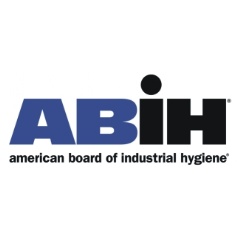Flame Retardants and Ways to Protect the Environment and Communities from Exposure Risks
Qualified Environmental Professional (QEP®) credential-holders practice with a broad understanding of environmental science as well as specialized knowledge in water quality, air quality, solid and hazardous waste, or environmental science management & policy.
While some flame retardants have already been phased out in the United States due to health and environmental concerns, many others can still be found all around us in homes, schools, work environments, and even the outdoors.
Since the 1970s, a diverse group of chemicals known as flame retardants have been added to, or applied on, thousands of different consumer and industrial goods to address flammability standards in countries across the globe. Flame retardants have been formulated to slow or prevent the start of a fire on these products and materials.
The National Institute of Environmental Health Sciences (NIEHS) lists the following products where flame retardants are typically found. They include:
- Furnishings such as foam, upholstery, mattresses, carpets, curtains, and fabric blinds.
- Electronics and electrical devices such as computers, laptops, phones, televisions, and household appliances, plus wires and cables.
- Building and construction materials including electrical wires and cables, and insulation materials, such as polystyrene and polyurethane insulation foams.
- Transportation products such as seats, seat covers and fillings, bumpers, overhead compartments, and other parts of automobiles, airplanes, and trains.
While there are hundreds of chemical compounds that have been used as flame retardants, they are typically grouped based on whether they contain bromine, chlorine, phosphorus, nitrogen, metals, or boron. The U.S. Environmental Protection Agency (EPA) reports that test data and monitoring studies in humans and the environment have demonstrated that certain flame retardant chemicals can persist in the environment, bioaccumulate in people and animals, and have been shown to cause adverse developmental effects in animals.
“While some flame retardants have already been phased out in the United States due to health and environmental concerns, many others can still be found all around us in homes, schools, work environments, and even the outdoors,” said Dirk Yamamoto, PhD, CIH® and Chair of ABIH®. “These chemicals can get into the air, water, and soil during their manufacture and can escape into the indoor and outdoor environments when the products and materials that contain them are used and break down. Health concerns due to exposures range from cancer and reproductive toxicity to endocrine and thyroid disruption to name a few potential adverse effects.”
Helping to identify and mitigate environments at risk from these chemicals are Qualified Environmental Professionals (QEPs). The QEP® credential demonstrates a broad understanding of environmental science, specialized knowledge in a specific environmental discipline, along with a commitment to high standards of practice and ethics. These dedicated professionals are available to investigate, manage, and mitigate issues associated with flame retardants and other environmental hazards.
To learn more about the QEP® credential or Environmental Professional In-Training (EPI) designation, or to locate a professional to perform environmental services, visit www.IPEP.org, email ipep@IPEP.org , or call (517) 853-5766.
About the American Board of Industrial Hygiene ®
Since 1960, ABIH®, a not-for-profit corporation, has been the world’s largest organization for certifying professionals in the practice of industrial hygiene. ABIH® is the premier credentialing body responsible for ensuring high-quality certification including education, experience, examination, certification maintenance, and ethics enforcement. ABIH® administers the Certified Industrial Hygienist® (CIH®) program, the Qualified Environmental Professional (QEP®) credential for established environmental practitioners, and the Environmental Professional In-Training (EPI) designation for early-career practitioners. Currently, more than 7,600 people around the world hold the CIH® credential, QEP® credential, or EPI designation.
( Press Release Image: https://photos.webwire.com/prmedia/12710/237147/237147-1.jpg )
WebWireID237147
- Contact Information
- Paul Cochrane
- President
- Cochrane & Associates, LLC
- Contact via E-mail
This news content may be integrated into any legitimate news gathering and publishing effort. Linking is permitted.
News Release Distribution and Press Release Distribution Services Provided by WebWire.
